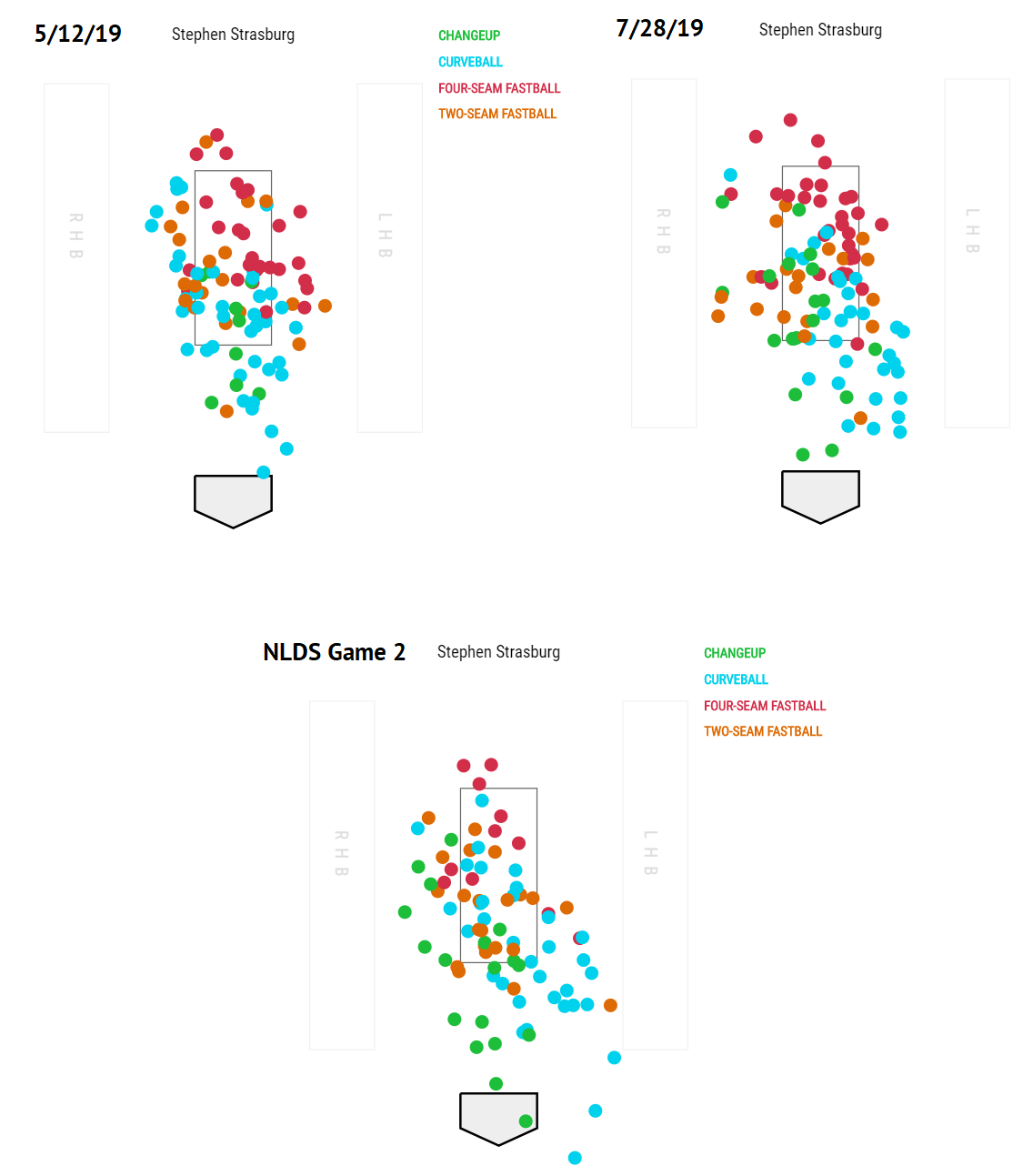The NLDS Game 5 Pitching Matchups in Two Tables
Yesterday, Jay Jaffe noted that starting pitching has been carrying a greater load in the playoffs this year than in the regular season and recent postseasons. One really good reason for that is the sheer number of very good starters in the playoffs this October. Take today’s games as an example. Jack Flaherty and Mike Foltynewicz will go head to head this afternoon, followed by Walker Buehler and Stephen Strasburg tonight.
Below, find a table with the NL pitching WAR leaders this season:
| Name | Team | ERA | FIP | WAR |
|---|---|---|---|---|
| Jacob deGrom | Mets | 2.43 | 2.67 | 7.0 |
| Max Scherzer | Nationals | 2.92 | 2.45 | 6.5 |
| Stephen Strasburg | Nationals | 3.32 | 3.25 | 5.7 |
| Walker Buehler | Dodgers | 3.26 | 3.01 | 5.0 |
| Hyun-Jin Ryu | Dodgers | 2.32 | 3.10 | 4.8 |
| Patrick Corbin | Nationals | 3.25 | 3.49 | 4.8 |
| Jack Flaherty | Cardinals | 2.75 | 3.46 | 4.7 |
| Zack Wheeler | Mets | 3.96 | 3.48 | 4.7 |
| Noah Syndergaard | Mets | 4.28 | 3.60 | 4.4 |
| Sonny Gray | Reds | 2.87 | 3.42 | 4.4 |
Three of this season’s top seven National League pitchers by WAR are set to start, and try to get their teams a series away from the NL pennant. It’s possible we see a few more of those pitchers throw in relief in tonight’s games, as well. Now, look at this table showing the NL pitching WAR leaders since August 6 when Mike Foltynewicz made his first start since returning from the minors:
| Name | Team | ERA | FIP | WAR |
|---|---|---|---|---|
| Jack Flaherty | Cardinals | 0.84 | 2.24 | 3.1 |
| Jacob deGrom | Mets | 1.62 | 2.26 | 2.3 |
| Zack Wheeler | Mets | 2.95 | 3.43 | 1.6 |
| Stephen Strasburg | Nationals | 2.4 | 3.5 | 1.6 |
| Sandy Alcantara | Marlins | 2.73 | 3.72 | 1.5 |
| Yu Darvish | Cubs | 3.08 | 3.04 | 1.4 |
| Sonny Gray | Reds | 2.01 | 3.33 | 1.4 |
| Walker Buehler | Dodgers | 3.35 | 3.06 | 1.3 |
| Kyle Hendricks | Cubs | 4.47 | 3.47 | 1.2 |
| Luis Castillo | Reds | 5.37 | 3.66 | 1.2 |
| Mike Foltynewicz | Braves | 2.65 | 3.77 | 1.1 |
| Aaron Nola | Phillies | 4.5 | 3.78 | 1.1 |
| Max Fried | Braves | 3.91 | 3.23 | 1.1 |
| Patrick Corbin | Nationals | 2.83 | 4.04 | 1 |
We could very well see an offensive explosion today, but the scheduled starting pitchers are some of the best in the game this year, with Mike Foltynewicz joining the group over the last two months of the season. Elimination games are almost always exciting, and these ones are likely to feature great pitching to boot.

